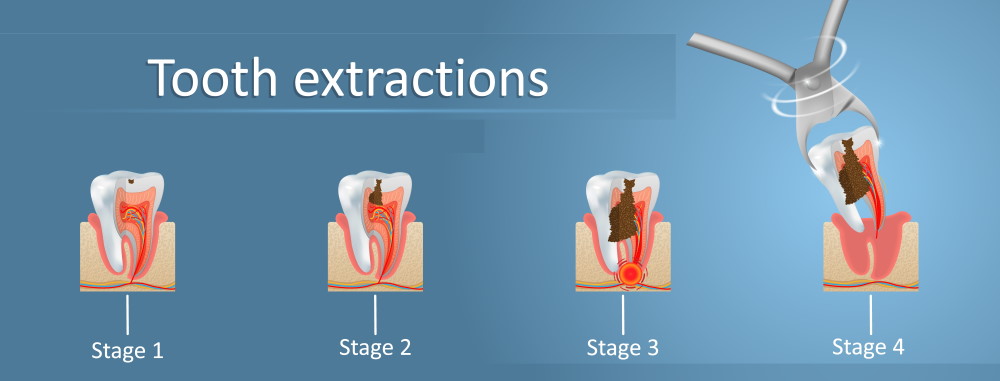Introduction
Are you scheduled for a tooth extraction and feeling a bit anxious about the procedure? Don’t worry, you’re not alone. Many people experience some level of apprehension when it comes to dental procedures, especially extractions. However, understanding what to expect during a tooth extraction can help alleviate some of your concerns and make the process smoother. In this step-by-step guide, we will walk you through the entire procedure, from preparation to aftercare, so you can feel more informed and prepared.
Preparing for the Extraction
Before undergoing a tooth extraction, it is important to prepare yourself mentally and physically. Here are the steps involved in preparing for the procedure:
Consultation with the Dentist
The first step is to schedule a consultation with your dentist. During this appointment, the dentist will examine your tooth and determine if extraction is necessary. They will also discuss the procedure with you and answer any questions or concerns you may have.
X-rays and Pre-operative Instructions
Once the decision for extraction is made, the dentist may take X-rays of the affected tooth to assess its position and condition. They will also provide you with pre-operative instructions, such as fasting requirements and medication restrictions, if any.
The Day of the Extraction
On the day of the tooth extraction, you should be prepared for the following steps:
Numbing the Area
Prior to the extraction, the dentist will administer a local anesthetic to numb the area around the tooth. This ensures that you do not experience any pain during the procedure.
Loosening the Tooth
Once the area is numb, the dentist will use a dental instrument called an elevator to loosen the tooth from its socket. This may cause some pressure, but you should not feel any pain.
Extraction of the Tooth
Using forceps, the dentist will carefully grasp the tooth and gently rock it back and forth to remove it from the socket. You may feel some pressure during this step, but it should not be painful.
Stitches (if necessary)
After the tooth is extracted, the dentist may need to place stitches to close the extraction site. This is more common for complex extractions or when multiple teeth are removed at once.
Summary

A tooth extraction is a common dental procedure that involves the removal of a tooth from its socket in the jawbone. It may be necessary for various reasons, such as severe tooth decay, gum disease, overcrowding, or to prepare for orthodontic treatment. While the thought of having a tooth pulled may seem intimidating, understanding the step-by-step process can help ease your anxiety.
First, your dentist will thoroughly examine your tooth and take any necessary X-rays to assess the condition and position of the tooth. They will then administer a local anesthetic to numb the area around the tooth, ensuring you won’t feel any pain during the extraction. Once the area is numb, your dentist will use specialized tools to gently loosen the tooth from its socket and remove it.
After the tooth extraction, your dentist will provide you with detailed instructions for post-operative care. This may include recommendations for pain management, eating and drinking restrictions, and proper oral hygiene practices. It’s crucial to follow these instructions to promote healing and prevent complications.
By understanding the step-by-step process of a tooth extraction and following your dentist’s guidance, you can have a smoother and more comfortable experience. Remember, your dentist try this web-site is there to answer any questions or address any concerns you may have, so don’t hesitate to communicate openly with them throughout the procedure.
- Q: What is a tooth extraction?
- A: A tooth extraction is a dental procedure in which a tooth is removed from its socket in the jawbone.
- Q: Why is a tooth extraction necessary?
- A: Tooth extraction may be necessary if a tooth is severely damaged, decayed, infected, or causing overcrowding.
- Q: How is a tooth extraction performed?
- A: The dentist will administer local anesthesia to numb the area around the tooth. Then, using specialized tools, they will gently loosen the tooth and remove it from the socket.
- Q: Will I feel any pain during the tooth extraction?
- A: No, you should not feel any pain during the tooth extraction procedure due to the local anesthesia. However, you may experience some pressure or pulling sensations.
- Q: How long does a tooth extraction take?
- A: The duration of a tooth extraction can vary depending on the complexity of the case. On average, it takes about 20 to 40 minutes.
- Q: What should I expect after a tooth extraction?
- A: After the extraction, you may experience some bleeding, swelling, and discomfort. The dentist will provide you with post-operative instructions to follow for a smooth recovery.
- Q: How long does it take to recover from a tooth extraction?
- A: The recovery period typically lasts about one to two weeks. However, the initial healing of the extraction site may take a few days.
- Q: Are there any risks or complications associated with tooth extraction?
- A: While tooth extraction is generally safe, there can be some risks such as infection, dry socket, nerve damage, or excessive bleeding. Your dentist will discuss these risks with you before the procedure.
- Q: Can I eat normally after a tooth extraction?
- A: It is recommended to stick to soft foods and avoid chewing near the extraction site for the first few days. Gradually, you can reintroduce solid foods as you feel comfortable.
- Q: When should I

Welcome to my website! My name is Dylan Boake, and I am a dedicated and passionate Dental Assistant with years of experience in the field. I am thrilled to share my knowledge and expertise in dental nutrition, oral health care, tooth extraction, and dental associations with you.


